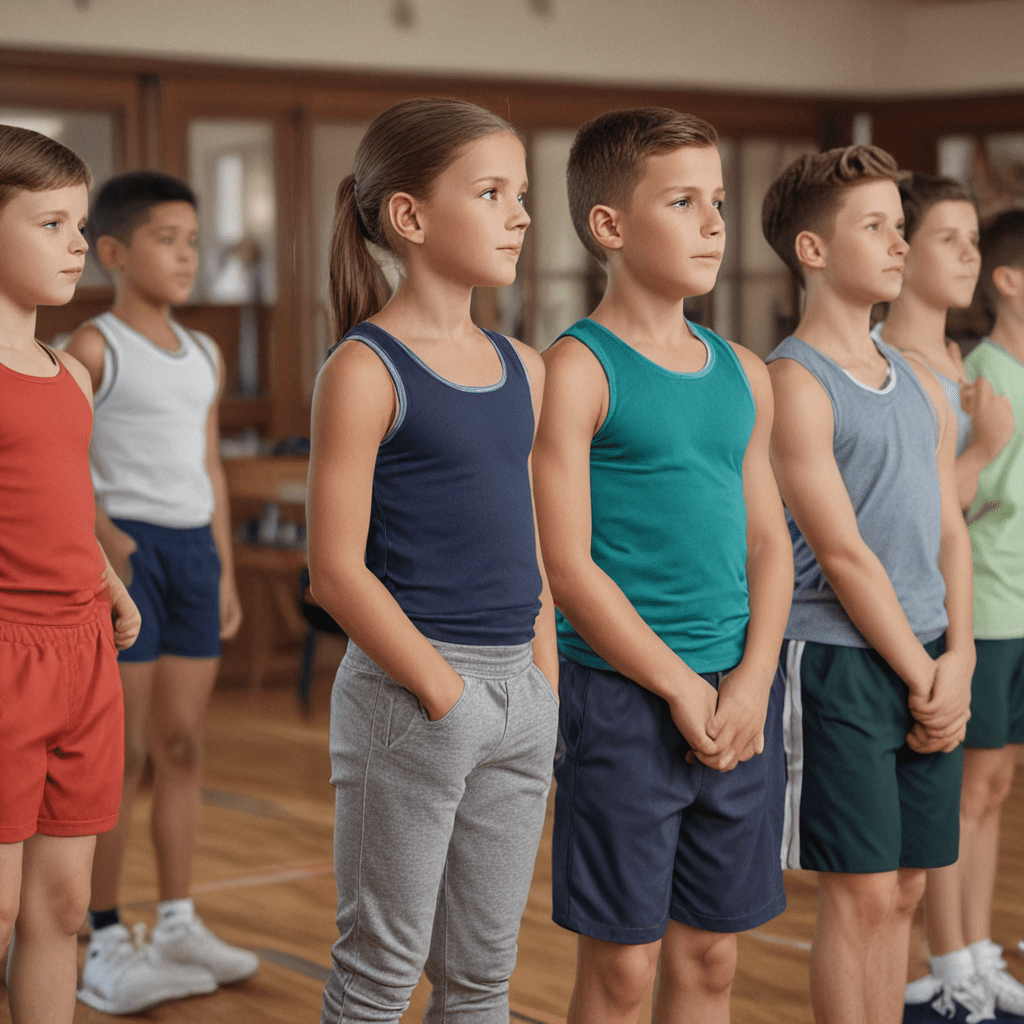
1. Introduction
Teaching Kids the Importance of Listening to Their Bodies During Physical Activity: An Age-Appropriate Guide for Parents and Educators
In an age of ever-increasing digital distractions and sedentary lifestyles, it is crucial that children develop a healthy relationship with physical activity and learn the importance of taking care of their bodies. An essential aspect of this involves teaching them to listen to their physical cues during any form of exertion. When kids are mindful of their body's signals, they can better avoid injuries, maximize their performance, and foster a lifelong commitment to their well-being.
2. Understanding Body Cues
The human body's intricate communication system involves various cues sent through physical sensations—both pleasant and unpleasant—which provide invaluable feedback about its state. Teaching kids to pay attention to and interpret these cues is critical for their safety and development. Key physical indicators that need to be acknowledged and understood include:
- Sensations: Notice sensations in muscles and joints—tightness, soreness, burning sensation, or tingling—which indicate the need for休息.
- Pain: Learn early on the difference between common muscle soreness and actual pain, which is the body's clear signal to stop.
- Breathing: Listen to their breathing: shallow or rapid breath could signal dehydration or fatigue; slow and deep indicates a regulated and steady state.
- Heart Rate: Become aware of their heart rate. A racing or pounding pulse, especially combined with pain, warrants immediate stoppage.
3. Signs of Fatigue and Exhaustion
As young physically active bodies exert themselves, natural feelings of tiredness will set in. However, excessive fatigue or exhaustion must be addressed with adequate rest. Signs of fatigue to look out for involve:
- Persistent physical and emotional lethargy
- Reduced performance capabilities
- Increased muscle tension and soreness
- Impaired coordination
- Difficulty concentrating and irritability
If fatigue is ongoing, parents and educators must encourage a thorough examination by healthcare professionals such as pediatricians or physical therapists.
4. Recognizing Discomfort and Pain
Differentiating the normal physiological responses to vigorous activity from actual discomfort or pain can prevent minor setbacks from becoming significant injuries. Teach children the significance of understanding the differences:
- Discomfort: Often temporary aches and pains are the body's natural responses to the stress, lactic acid build-up, and muscle adaptation to exercise. Rest and stretching usually suffice to address discomfort adequately.
- Pain: Pain, however, may signal genuine injury, trauma, underlying medical conditions, and requires professional assistance. Encourage children to report pain, no matter how slight, so appropriate action can be taken.
5. The Importance of Rest and Recovery
Understanding the role of rest and rejuvenation is imperative for kids to reap the full benefits of physical exercise. Emphasizing the significance of rest in their fitness routine will help them realize that rest:
- Gives muscles and tissues ample time to repair
- Facilitates hormone production necessary for adaptation and recovery
- Improves endurance and promotes better sleep and mood
- Prevents serious injuries or chronic conditions
- Helps them perform better and more efficiently
6. Monitoring Hydration and Nutrition
Adequate hydration and proper nutrition are crucial for kids' energy levels, performance, and recovery. Teach them:
- Hydration: The importance of drinking plenty of fluids, especially water, before, during, and after physical activity to prevent dehydration.
- Electrolytes: Discuss electrolyte-rich drinks or fluids for prolonged or intense activities to replenish minerals lost through sweat.
- Nutrition: Emphasize the role of nutritious foods in fueling their bodies and supporting recovery, such as fruits, vegetables, whole grains, and lean proteins.
7. Promoting Open Communication
Establishing open communication is essential for kids to feel comfortable expressing their physical needs and concerns. Encourage them to:
- Ask questions: Prompt kids to ask questions about their bodies, training, and nutrition to foster a sense of empowerment and understanding.
- Trust their instincts: Teach them to trust their bodies and intuition, and to communicate any discomfort or pain promptly.
- Use "I" statements: Guide kids to use "I" statements to express their needs and feelings, e.g., "I'm feeling tired" or "My knee hurts."
8. Empowering Kids with Choice and Control
Empowering kids with choice and control promotes self-awareness and responsibility for their physical well-being:
- Listen to their bodies: Encourage them to pay attention to their body cues and make decisions based on their own experiences.
- Set their own goals: Involve kids in setting realistic goals that align with their physical capabilities and interests.
- Foster independence: Allow kids to participate in decision-making regarding their activities, rest periods, and nutrition choices.
9. Encouraging Self-Regulation
Self-regulation helps kids manage their emotions, behaviors, and physical responses to exertion:
- Self-monitoring: Teach kids to monitor their breathing, heart rate, and sensations to adjust their activity intensity as needed.
- Gradual progression: Encourage gradual progression in physical activities to allow the body to adapt and reduce the risk of overexertion.
- Mindfulness techniques: Introduce mindfulness techniques like deep breathing or meditation to help kids develop body awareness and self-regulation skills.
10. Fostering a Positive Body Image
A positive body image is essential for kids to feel confident and motivated in their physical endeavors:
- Focus on health: Emphasize the importance of health and well-being over appearance.
- Celebrate diversity: Highlight the beauty and functionality of different body types and encourage acceptance of individuality.
- Avoid comparisons: Discourage body comparisons with others and promote self-appreciation and respect for their unique bodies.
FAQs
Q: How can I teach my child to listen to their body?
A: Engage them in conversations about body cues, encourage them to trust their instincts, and provide opportunities for them to make choices and self-regulate.
Q: What are the signs of fatigue in children?
A: Persistent tiredness, reduced performance, increased muscle tension, impaired coordination, and irritability are all signs of fatigue.
Q: How do I know if my child's pain is serious?
A: Encourage your child to report any pain, no matter how slight. If the pain is severe, persistent, or accompanied by other symptoms such as swelling or bruising, seek professional medical advice.
Q: What is the importance of rest and recovery for kids?
A: Rest and recovery allow muscles and tissues to repair, facilitate hormone production, improve endurance, promote better sleep, prevent injuries, and help kids perform better.
Q: How can I foster a positive body image in my child?
A: Focus on health and well-being, celebrate diversity, avoid comparisons with others, and promote self-appreciation and respect for their unique bodies.


